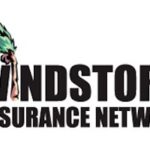Who Really Owns Your Domain?
Unfortunately there are many businesses out there who have spent thousands of dollars on web design, changed companies along the road, and find out later they no longer have access to their domain or website information. This is the key to your online presence, therefore it’s very important to take ownership and have your information. After all, it’s your company.
Domain Ownership
You can find out who the registered owner of your domain by reviewing the Whois of your domain. Here’s the key: if your company or staff name isn’t listed, you are not the official owner of the domain. If your previous web designer’s name or business is listed, read on. Look at your contract with the company, some illegitimate companies include a “free domain” in their bundles. If your agreement states you allow them to put the domain in their name, you need to rectify it sooner rather than later.
Domains are inexpensive and companies should always own them outright. It is dishonest that some companies offer “free domains” and hijack the customer and the domain later for exorbitant hosting fees.
Why You Want to Own Your Domain
1. Many companies change designers and hosting platforms throughout their growth cycle. If your domain isn’t in your name when you make that switch, the previous designer can make it very difficult for you to get your new website up and running. You’ve probably also spent thousands on printed marketing collateral with your domain, as well as the branding and visibility that’s already taken place.
2. If you find out the registrant’s name is not listed in your company name, it can be a time-consuming hassle to move it to another registrar depending on your hosting provider.
3. Most often, your domain includes your business name. If you ever want to trademark that it will be a hassle as well because you need to prove ownership.
4. You may have a difficult time proving how long you’ve been in business compared to a competitor because the domain wasn’t in your name from the time you set up the website.
Domain Name Ownership Solution
1. Make sure you have access to your domain and hosting accounts. If you’re one of the businesses above and it is listed in your web designers name, request the original designer to put the domain in your own name for security purposes. You’ll then need to set up a new account on the same registrar and complete a DNS transfer request. The original designer will have to approve the transfer and it should take less than 24 hours to reflect the changes.
2. Always make sure you receive your hosting information including username, password, pins, and account information when you set up your domain and website. You should also have all access to your website backend content management system including user id and password and sign-in details.
3. Ensure you have your website content, images, and copy backed up.
4. Change your Hosting. Have your new designer set it up and load your website (old or new) onto the new host. Be sure to conduct quality control as images/files can easily break during the transfer but are easy to fix.
5. Transfer DNS. If you’re now registered in the domain registrar, you can have the new designer point the DNS of your domain to the new host.
Issues?
Worst case scenario… you signed a bad contract and the original designer won’t transfer the domain, then you can offer to pay for it. If they don’t respond, send them a certified letter or call your attorney.
File a report with ICANN. In the ICAAN Whois Data Problem Report you can file a complaint. This can take a couple weeks to resolve and you may need to provide payment records, contract agreements, emails, etc. to prove domain ownership.
If you need legal advice, check out the ICAAN List of Approved Resolution Dispute Providers or contact your attorney.
Next worst case scenario, you buy a brand new domain and start over again. However, this can hinder any Search Engine Optimization (SEO) that you’ve already built up and you’ll need start from scratch. Not to mention the printed marketing collateral you probably have spent lots of money on.
Tips to Avoid all of the Above.
When you are ready to purchase a domain and have a new website created:
1. Ensure that the domain name and DNS info is listed with your company details. There are a number of ways to still maintain privacy while also having your details in the backend.
2. Request all of your sign-in information for domain, hosting, and website content management systems.
3. Ensure you back up your website content and images. A good web design company starts with a sitemap. If you are paying for design, you should have a copy of this.
4. Read the Fine Print. Before you get into any domain, website, hosting agreements, read the fine print.
5. Ensure that you know what you’re getting, what you’re paying for, and that you own your investment.





